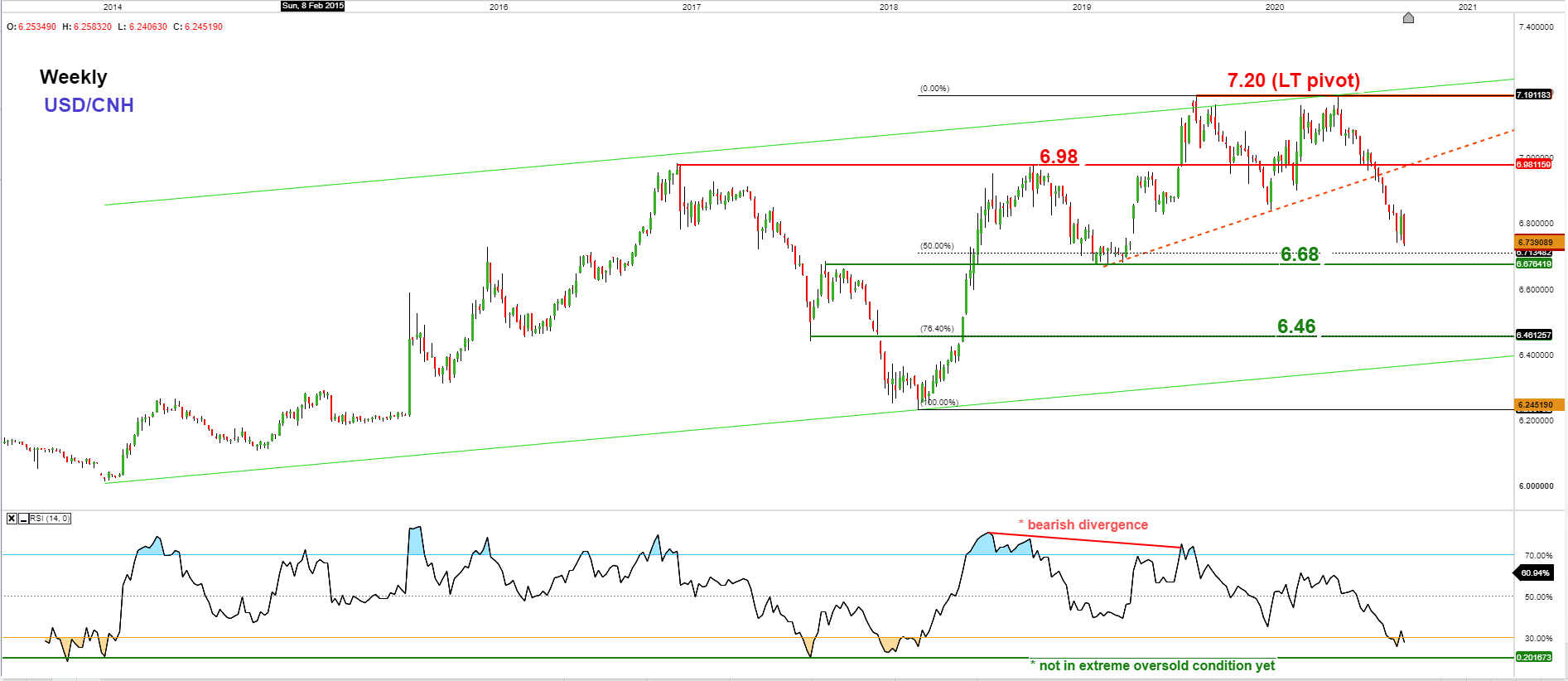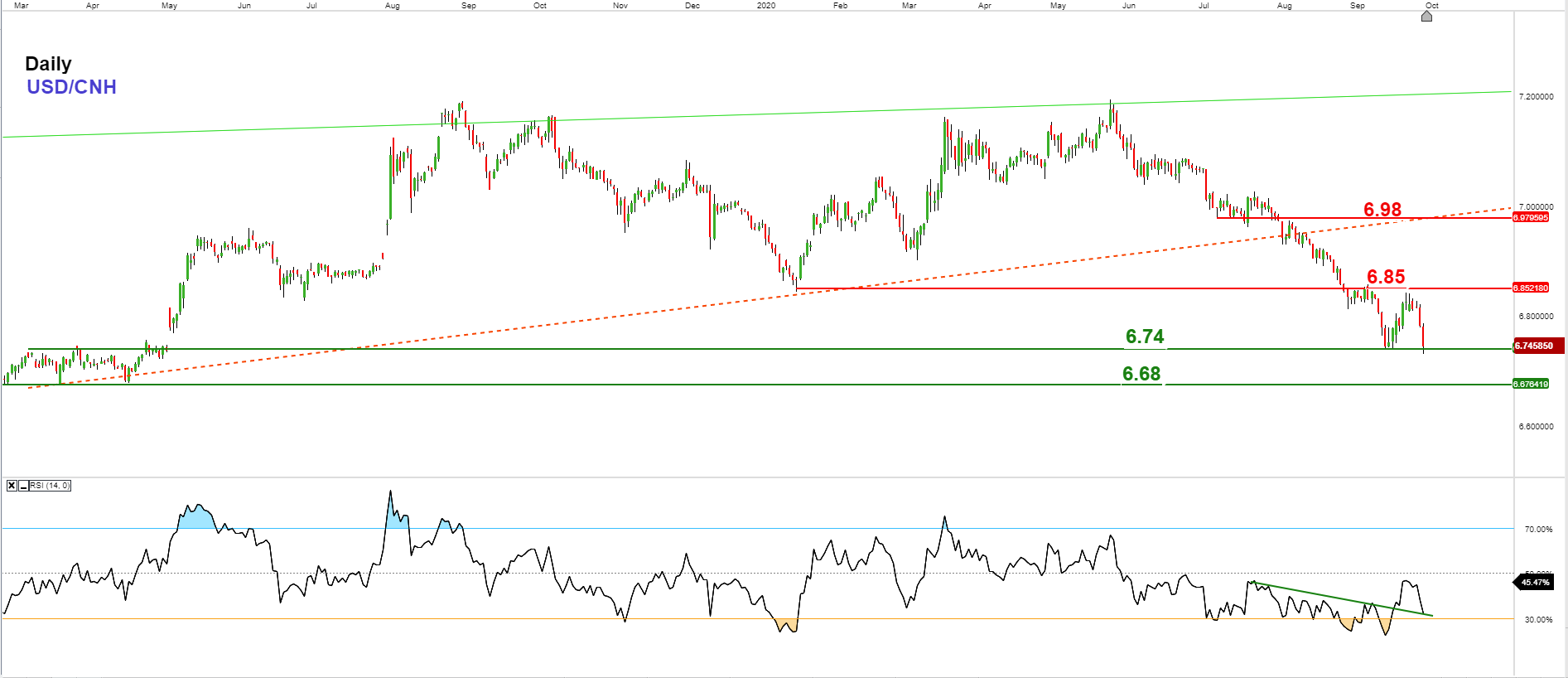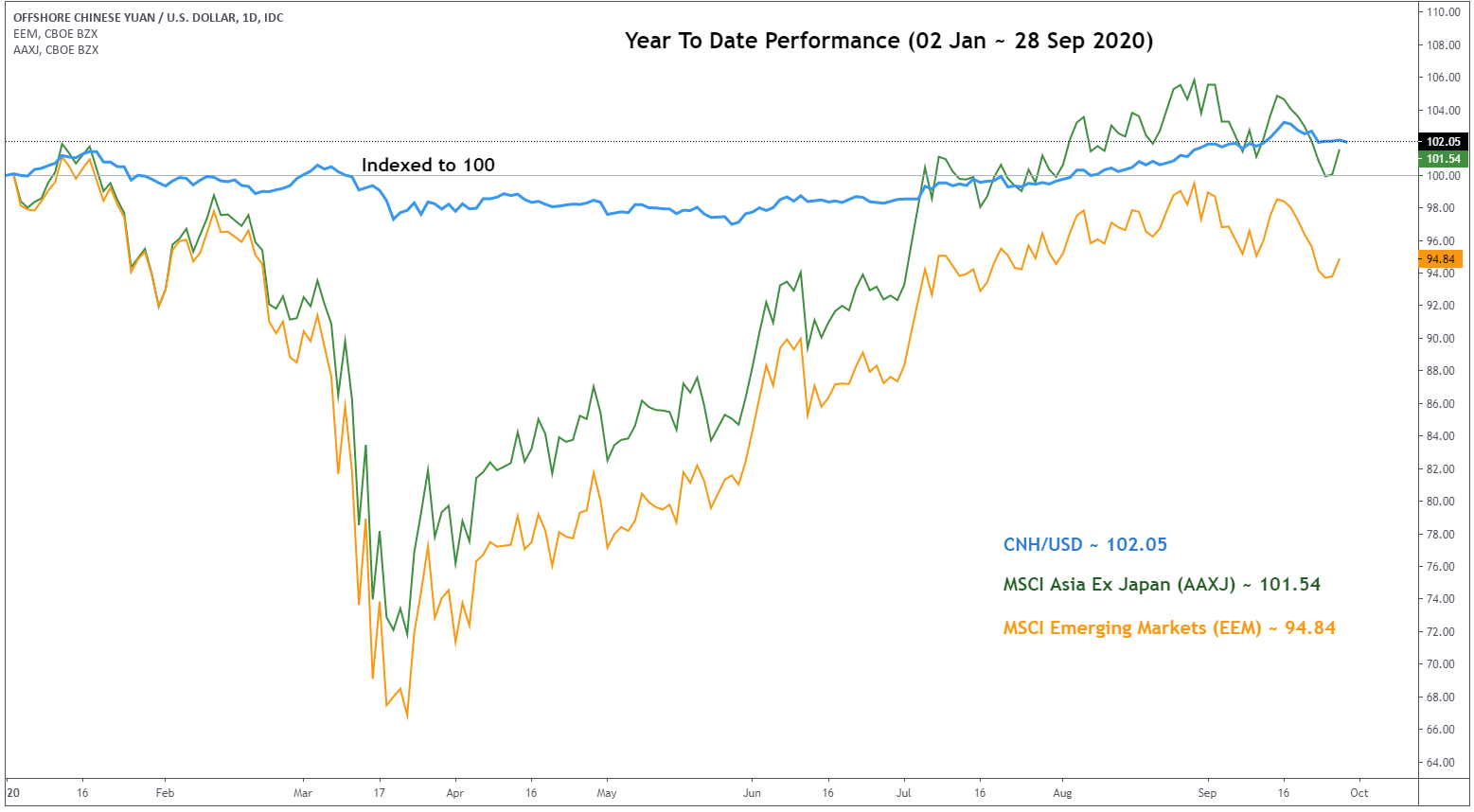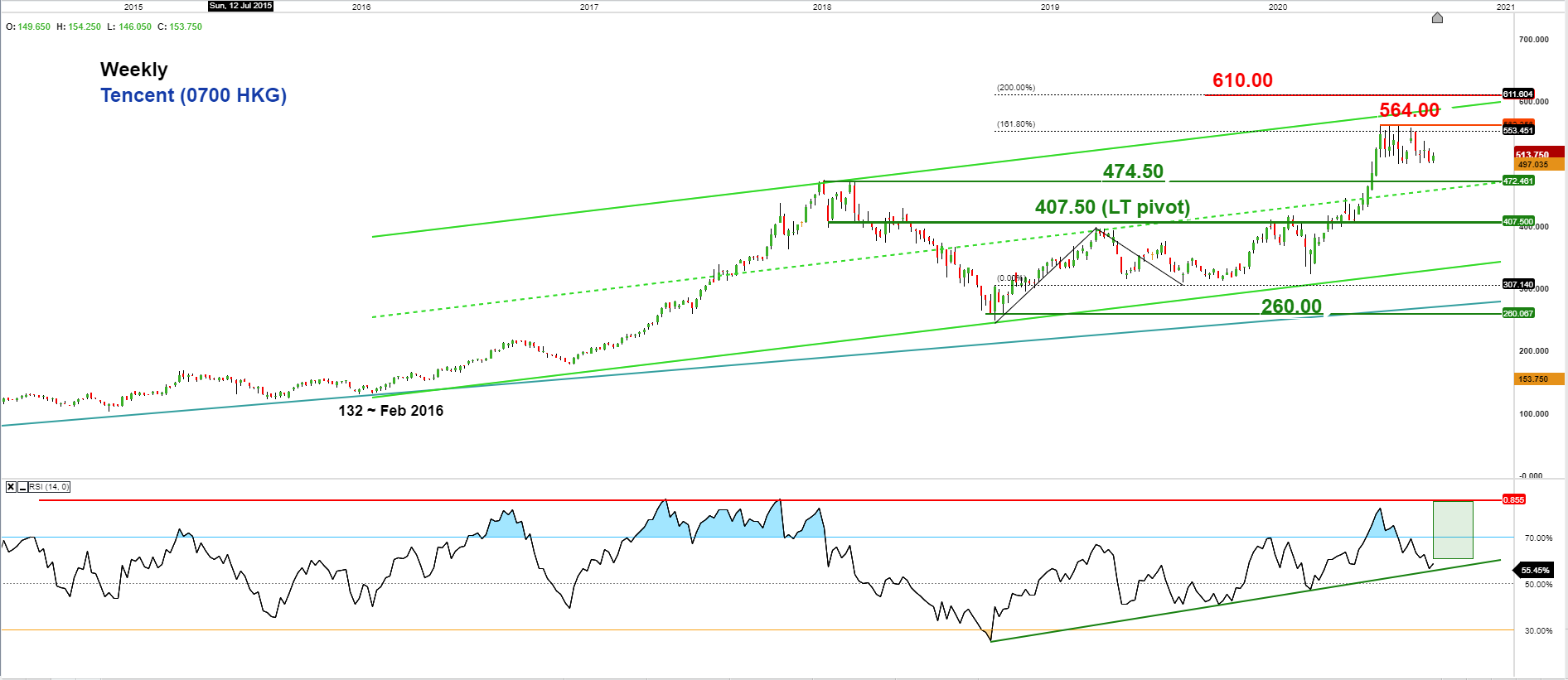The upcoming US presidential election on 3 November 2020 is going to be a watershed moment in modern history, due to the impending uncertainties surrounding the result. President Trump has indicated that he may challenge the outcome, implying a disorderly transition of power if challenger Joe Biden were to succeed.
In addition, the ongoing US-China ‘tech war’ will continue. The current US administration has maintained a hawkish stance and unpredictable approach towards US-China relations. Many analysts expect a Biden administration to adopt more ‘market-friendly’ foreign policies, but to retain a tough stance on Chinese trade with a more multilateral and predictable approach.
Tencent and USD/CNH: what to expect after the US election
Whatever the result, we do expect the markets to face a potential heightened state of volatility on election day. What does the US election mean for two of the highest-profile Asia-based instruments; the US dollar vs Chinese yuan renminbi (USD/CNH) and technology giant Tencent? Both can expect significant movement amid the outcome of US presidential election.
Read our technical analysis of the potential effect on these instruments and view the accompanying charts below.
USD/CNH – risk of a multi-month slide


The up move from the 26 March 2018 low of 6.24 has stalled at the upper limit of the long-term secular ascending channel (in place since the January 2014 low) at 7.20, coupled with a bearish divergence signal seen in the weekly relative strength index (RSI) during the period of 2 September 2019 to 25 May 2020 at its overbought region. These observations suggest a slowdown in the long-term upside momentum (see weekly chart).
From a multi-week perspective, a corrective rebound above the 16 September 2020 swing low of 6.74 cannot be ruled out, after a relatively steep decline from the 27 May 2020 high to the 16 September 2020 low, versus the prior decline from the 2 September 2019 high to the 20 January 2020 low. Coupled with a bullish breakout seen on the daily RSI oscillator (see daily chart).
A break above 6.85 may see a multi-week corrective rebound towards 6.98 resistance, before another potential longer-term impulsive downleg materialises to target the supports of 6.68 and 6.46.
Chinese yuan has a direct correlation with Asia Ex Japan stocks

The year-to-date performance of USD/CNH (inverted) from 2 January to 28 September 2020 seems to have had a positive impact on Asian Ex Japan and Emerging Markets equities as the yuan (CNH) appreciated against USD steadily.
If the long-term movement of USD/CNH unfolds as expected on the downside, it is likely to create a positive feedback loop for further potential upside movement on Asian Ex Japan and Emerging Markets equities in the next three to six months.
Tencent: consolidation within long-term secular uptrend

Source: CMC Markets
Chinese tech juggernaut Tencent has been dragged into the complex web of the ongoing US-China diplomatic row. It’s popular and widely used social app, WeChat, has been singled out as a national security concern and looks set to be banned in the US by the Trump administration.
The Tencent share price is still evolving within a long-term secular ascending channel, which has been in place since the February 2016 low of 132.00. Since hitting its current all-time high of 564.00 in July 2020, it has started to consolidate in a sideways range, holding above the median line of the ascending channel and the former major swing high area of January/March 2018 at 474.50.
The weekly RSI oscillator is still evolving in a positive configuration, holding above an ascending support at the 54 level and still has further potential room to manoeuvre to the upside before it reaches an extreme overbought level of 85.
So as long as the 407.50 long-term pivotal support holds, Tencent may see another potential impulsive upmove in the next three to six months to target the next resistance at 610.00 (upper boundary of the long-term ascending channel and Fibonacci extension cluster).
On the other hand, a weekly close below 407.50 invalidates the bullish scenario for a corrective decline to test the next support at 260.00 (the 22 October 2018 major swing low and ascending support from the May 2014 low).
Article by our Singapore market analyst, Kelvin Wong.
Disclaimer: CMC Markets is an execution-only service provider. The material (whether or not it states any opinions) is for general information purposes only, and does not take into account your personal circumstances or objectives. Nothing in this material is (or should be considered to be) financial, investment or other advice on which reliance should be placed. No opinion given in the material constitutes a recommendation by CMC Markets or the author that any particular investment, security, transaction or investment strategy is suitable for any specific person. The material has not been prepared in accordance with legal requirements designed to promote the independence of investment research. Although we are not specifically prevented from dealing before providing this material, we do not seek to take advantage of the material prior to its dissemination.





